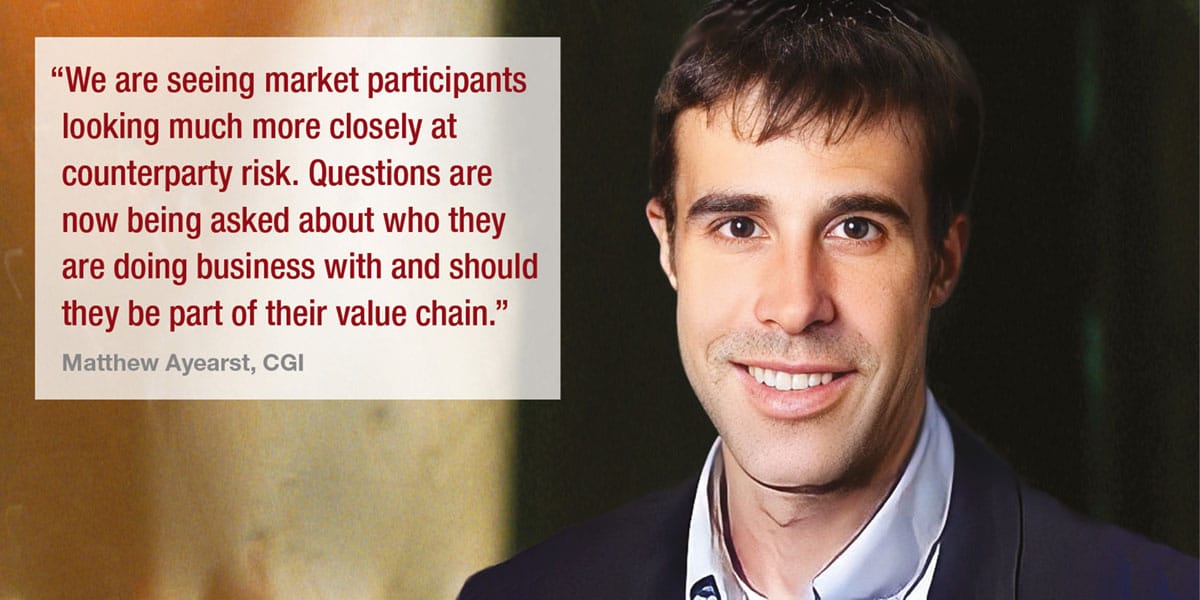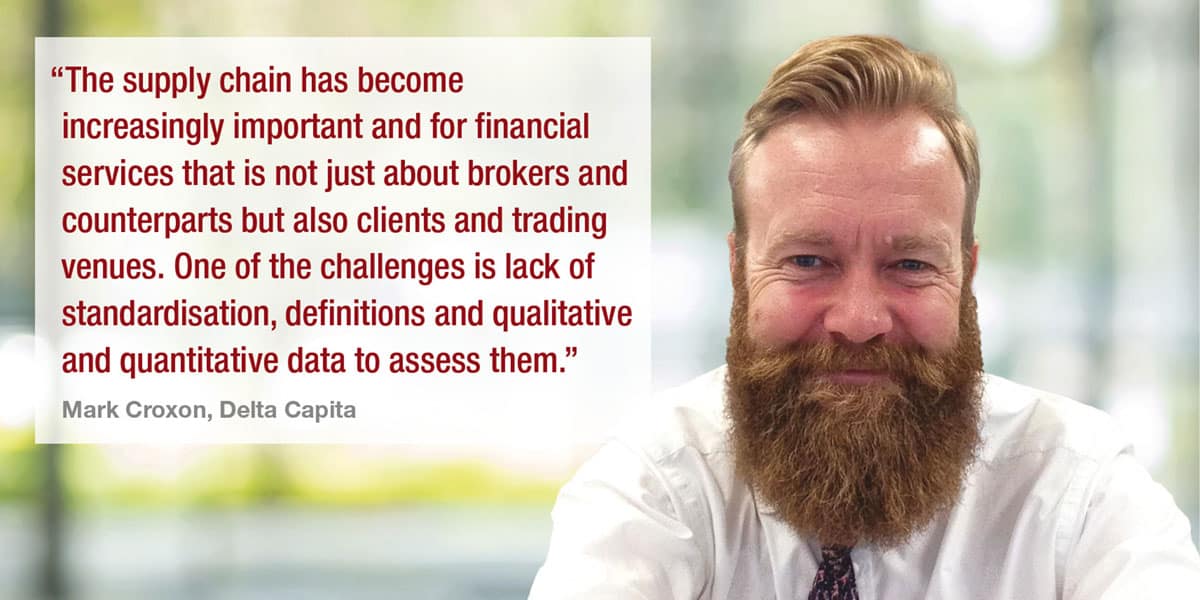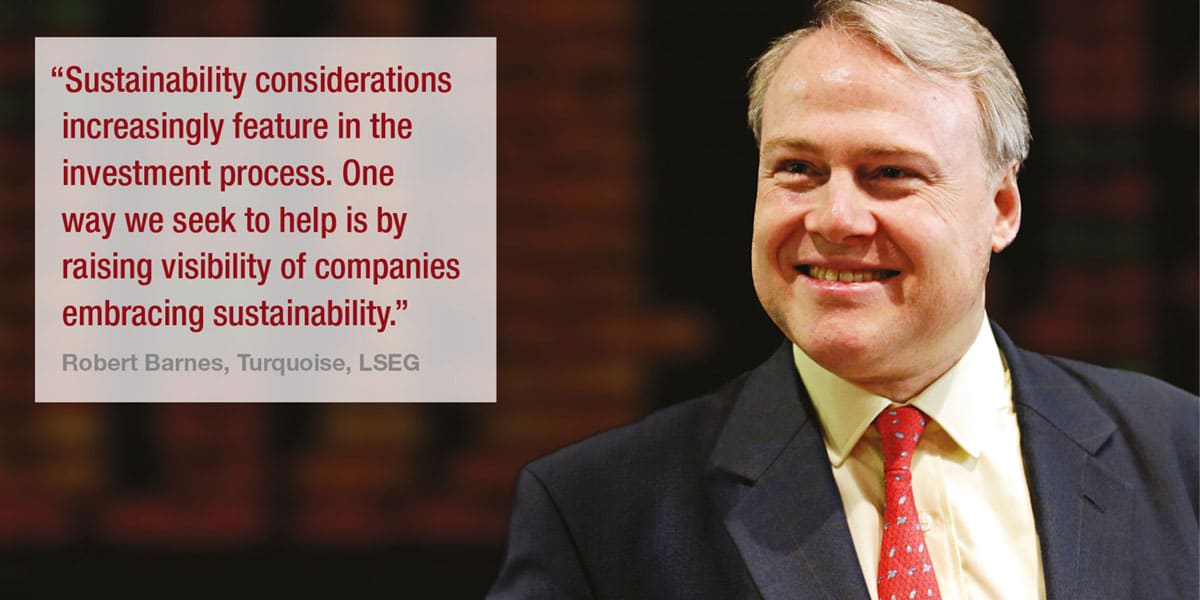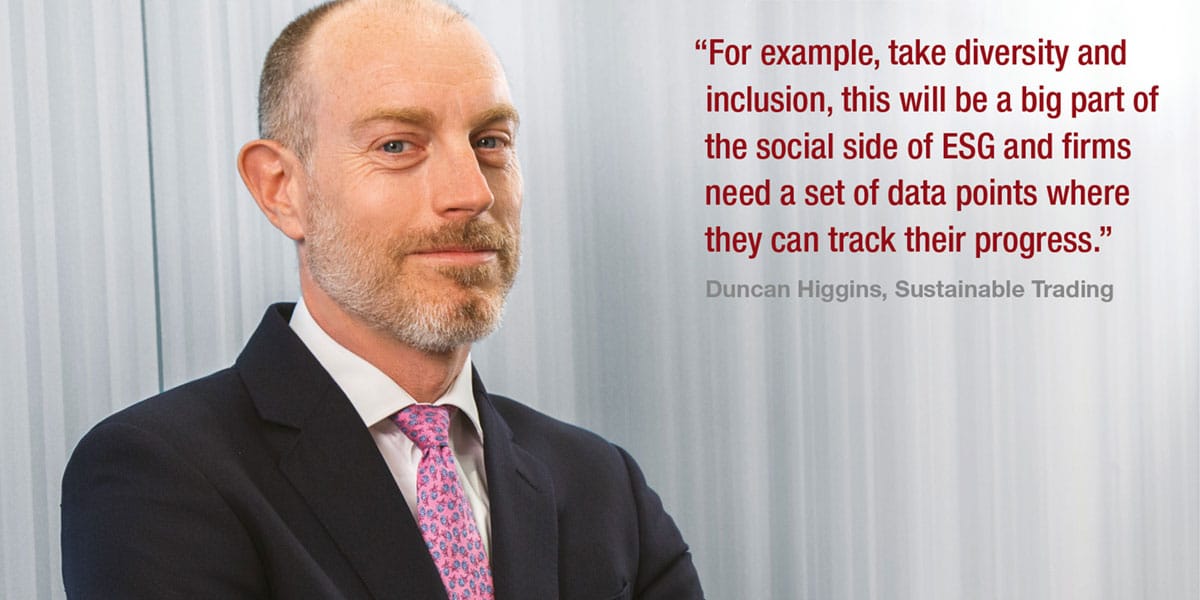Lynn Strongin Dodds explains how trading fits into the ESG paradigm.
Sustainability is often linked to actual investments but increasingly the remit has broadened with buy and sell side firms assessing every angle of the investment process. From a trading perspective this means being much more discerning and only doing business with those that have stellar environment, social and governance (ESG) credentials.

As Matthew Ayearst, director of sustainability and ESG at CGI put it, “we are seeing market participants looking much more closely at counterparty risk. Questions are now being asked about who they are doing business with and should they be part of their value chain. How are they executing the energy transition and mitigating some of the risks.”
Mark Croxon, global head of market infrastructure at Delta Capita notes that there has been progress with the agenda moving on from public statements to specific executable goals and developing the metrics to measure the progress. “The supply chain has become increasingly important and for financial services that is not just about brokers and counterparts but also clients and trading venues,” he says. “One of the challenges is lack of standardisation, definitions and qualitative and quantitative data to assess them.”

To date, the demand and interest in ESG in the investment industry has not flowed through to the operational impact of the trading industry, according to Duncan Higgins, founder of Sustainable Trading which was launched in February. “The network will not be focusing on investments but rather the people, processes, and technologies involved in the trading process.”
He adds, “We want to make a positive impact and complement what is taking place in the corporate world. One of our objectives is to establish the first set of best practices for ESG for trading firms and infrastructure providers which members can take away and implement within their own businesses.
“We are at the early stages but will be looking at the step-by-step practical changes that can be made. For example, take diversity and inclusion, this will be a big part of the social side of ESG and firms need a set of data points where they can track their progress.”
Moving at their own pace
In the meantime, stock exchanges are carving out their own sustainable path. “Sustainability considerations increasingly feature in the investment process,” says Dr Robert Barnes, group head of securities trading & CEO Turquoise, LSEG, which is a member of Sustainable Trading.

“One way we seek to help is by raising visibility of companies embracing sustainability, for example by tagging those companies available for trading in the Turquoise electronic stock universe that have been provided with the London Stock Exchange’s Green Economy Mark for listed companies qualifying by earning more than 50 percent of revenues via green sources.”
He notes that: “There is much greater awareness of the carbon emissions generated by energy intensive trading infrastructure such as data centres and the need to increase energy efficiency by switching to cleaner sources such as renewables. Many financial service providers have already set their own net zero targets and are actively exploring ways to reduce their scope one and two emissions. For example, during this year’s LSEG data centre migration, we have refreshed Turquoise with servers that are more performant with higher capacity while consuming half the power.”
The exchange is also a founding member of Net Zero Financial Services Providers Alliance (NZFSPA), part of Mark Carney’s UN backed group, GFANZ. It comprises credit rating agencies, stock exchanges, index providers and auditors as well as SGX, MSCI, S&P and Moody’s. The aim is to achieve net zero greenhouse gas emissions by 2050 at the latest and to set meaningful interim targets for 2025 within 12-months of joining (subject to adhering to all regulations and professional standards).
These commitments are in addition to the organisations setting Science Based Targets to reduce their operational emissions in line with limiting global temperature rises to 1.5°C. This is seen as a major step in mobilising the flow of capital committed to supporting the transition to a net zero economy, by helping to ensure that asset managers, banks and financial institutions have the data, information and products needed to achieve their own net zero goals.
Euronext, on the other hand, has launched an ESG strategy 2022-2024 embedded in the strategic plan “Growth for Impact 2024”. It focuses on accelerating climate action both in the Euronext operations and through the role it plays in empowering sustainable finance across all its markets. In that context, Euronext has launched its “Fit for 1.5°” climate commitment, for its own business, its partners and its clients.
The pan European stock exchange also recently completed the migration of its core data centre, which handles 25% of its European trading volumes and related colocation services from Basildon, UK, to the Aruba Global Cloud Data Centre IT3 in Bergamo, Italy.
Although Brexit was part of the decision to move, the other driving factor was sustainability. It notes that the Aruba Global Cloud Data Centre is 100% powered by renewable energy. Most of its energy is self-produced through a large photovoltaic system and a hydroelectric unit. The facility also benefits from reduced power consumption thanks to very efficient cooling systems using geothermal and dynamic free cooling, and the use of cloud computing to reduce the number of servers.

The migration was timed to pave the way for the migration of the Borsa Italiana’s equity and derivatives markets onto the Euronext Opti trading platform in 2023.
Diversity and inclusion are also high on the exchange agenda. For example, LSEG was an early signatory to the HMT Women in Finance Charter in 2016 and has introduced new targets for gender diversity – applicable to the whole Group – that will result in a 40% share of women in senior leadership roles by end of 2022. Euronext is targeting at least 30% of seats for each gender for its supervisory board and managing board while SIX is committed to growing the percentage of women in middle and top management level to a minimum of 25% by 2023
Carbon trading
The changes in sustainable policy though are not just about reducing the carbon footprint and promoting more women. It is also about creating solutions to tackle problems such as climate change.
A recent White Paper by SIX and the Università della Svizzera Italiana sets out the challenges of carbon pricing and trading, and the role that exchanges can play. It notes that “the fight against climate change can only be won if both compliance and voluntary carbon offset markets function efficiently and potentially should have interoperability between the compliance and voluntary markets.”
The paper argues that financial market infrastructure (FMI) providers should step in and develop the trading platforms. They are well placed to trade standard voluntary carbon credits and more complex products such as pre-purchase agreements that aim at supplying financing for developers of voluntary carbon offset projects or funds that allow investors to diversify their portfolio of carbon credits. The result, it notes, would be organised trading platforms for voluntary carbon credits can ensure price transparency, liquidity and bring together demand and supply.
In addition, the paper believes there is an increasing trend to tokenise voluntary carbon offsets, which gives FMI providers such as SIX an “opportunity to create a professional and liquid marketplace for these tokens and become the global market leader in this promising new and growing area.”
©Markets Media Europe 2022
